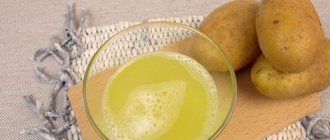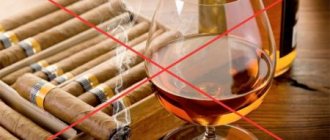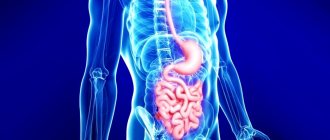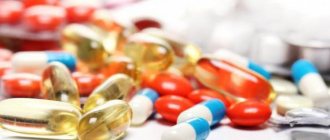Gastroesophageal reflux disease (GERD) is a disease in which inflammation of the walls of the lower esophagus occurs as a result of regular reflux (backward movement) of gastric or duodenal contents into the esophagus.
According to the results of some studies, in Russia 11–23% of the population are carriers of the disease, according to other data – up to 30%; the prevalence of GERD is compared with the prevalence of peptic ulcer and cholelithiasis. Difficulties in making a diagnosis are associated with a number of reasons: firstly, the disease is often asymptomatic; secondly, even with pronounced subjective sensations, there may be no objective supporting data; thirdly, symptoms similar to those of GERD may be physiological in nature and occur in healthy people.
It is mainly manifested by heartburn, belching with a sour or bitter taste, pain and difficulty swallowing food, dyspepsia, chest pain and other symptoms that worsen after eating and physical activity.
Classification
According to the International Classification of Diseases, 10th revision, the following forms of GERD exist:
- with esophagitis (synonym – reflux esophagitis);
- without esophagitis.
According to the degree of damage established on the basis of the endoscopic picture (FGDS), 4 degrees of reflux esophagitis (RE) are distinguished:
- Linear RE - mild hyperemia and swelling of the mucous membrane in the area of the lower esophageal sphincter, individual erosions on one of the longitudinal folds of the esophagus.
- Confluent RE - erosive defects prone to merging are found in more than one fold.
- Ring-shaped EC - the lower third of the esophagus is circularly affected by multiple erosions merging into larger defects, covered with fibrinoid deposits, necrotic masses.
- Stenosing RE – chronic ulcerative defects, narrowing of the lumen of the esophagus, epithelial metaplasia.
In some patients, the complaints presented do not correlate with endoscopic data (there is no damage to the mucous membrane of the esophagus); in this case, they speak of an endoscopically negative form of the disease.
Why GERD develops: causes and predisposing factors
The main factor in the development of gastric reflux disease in patients of any age is insufficient tone of the muscle fibers that make up the lower esophageal sphincter, which separates the organ cavity from the stomach. Against this background, the ability of the mucous membranes of the esophagus to resist the harmful effects of acids and bile components contained in the contents of the stomach and intestines decreases. The motility of the walls of the esophageal tube is disrupted, which also negatively affects the cleansing function and prevents the spontaneous removal of irritating agents from the esophageal cavity.
Factors in the development of GERD
Another factor that can affect the evacuation function of the stomach and duodenum is an increase in intra-abdominal pressure - the force with which organs and fluid circulating in the peritoneal space press on the bottom of the peritoneum and its walls. Blood pressure may be elevated during pregnancy or physical activity, or in people who are overweight. An occupational factor that disrupts normal intra-abdominal pressure is activities associated with working in an inclined position, so the risk group for the development of GERD includes gardeners, cleaners, storekeepers, loaders, etc.
Factors predisposing to the development of GERD
Other reasons that can provoke diseases include:
- long-term tobacco addiction (more than 3 years);
- a state of chronic stress associated with a professional or social environment;
- non-compliance with the principles of healthy eating (abuse of spices, alcohol, fried foods);
- taking drugs that increase the concentration of dopamine in peripheral vessels (Pervitin, Phenamine).
Note! The risk of gastroesophageal reflux disease increases in people over 40 years of age. At a younger age, the frequency of diagnosis of pathology is about 21.9%.
Causes of reflux esophagitis
Causes
The main pathogenetic substrate for the development of gastroesophageal reflux disease is gastroesophageal reflux itself, that is, retrograde reflux of stomach contents into the esophagus. Reflux most often develops due to incompetence of the sphincter located at the border of the esophagus and stomach.
Normally, during swallowing movements, the muscle tone of the lower esophageal sphincter decreases, allowing the bolus of food to pass from the esophagus into the stomach, and after the passage of food, the sphincter closes.
Heartburn with GERD is the main symptom; it can take on a varied nature: it can occur several times during the day, or it can be constant.
Under the influence of various external and internal factors, hypo- or atony of the lower esophageal sphincter develops, which leads to the reverse reflux of aggressive gastric contents (reflux). Reflux causes damage to the mucous membrane of the esophagus, since the esophagus is characterized by a slightly acidic pH reaction (closer to neutral), and gastric juice has a sharply acidic pH reaction due to hydrochloric acid and proteolytic enzymes. Getting into the esophagus, gastric juice causes a chemical burn of the mucous membrane.
Factors that reduce the tone of the esophageal sphincter:
- taking certain medications (calcium antagonists, nitrates, antispasmodics, analgesics, theophyllines, etc.);
- consumption of food and medicines containing caffeine (tea, coffee, tonic drinks, drugs Citramon, Caffetin, etc.);
- eating peppermint and products containing it;
- smoking;
- eating disorders;
- increased intra-abdominal pressure (constipation, inadequate physical activity, prolonged inclined position of the body, etc.);
- pathologies of the vagus nerve (vagal neuropathy in diabetes mellitus, vagotomy);
- pregnancy.
Reasons leading to episodes of spontaneous relaxation of the lower esophageal sphincter:
- esophageal dyskinesia (peristalsis disorders);
- swallowing a large amount of air while eating - aerophagia (provoked by a hasty, large meal);
- flatulence;
- volumetric formations of the abdominal cavity and retroperitoneal space;
- gastroduodenal pathology [hiatal hernia, peptic ulcer of the stomach and duodenum (most often when the ulcer is localized in the bulb), cholelithiasis, chronic gastritis, colitis];
- stress;
- slowing down the movement of contents through the duodenum (duodenostasis);
- excessive consumption of fatty meats, refractory fats, flour products, seasonings, fried foods.
general description
Gastroesophageal reflux disease (GERD) is a chronic disease with a tendency to recur, caused by spontaneous reflux of stomach and/or duodenal contents into the esophagus, which leads to pathological changes in the lower esophagus.
Changes may also occur in the larynx, trachea, and pharynx. GERD is the most common pathology of the digestive organs. The main symptom of GERD (recurrent heartburn) occurs in every second person, somewhat more often in pregnant women. Starting from adolescence, the frequency of the disease increases sharply and decreases only in old age.
The cause of GERD is a decrease in the tone of the lower esophageal sphincter. This is facilitated by:
- drinking caffeine-containing drinks, alcohol, taking certain medications, smoking, pregnancy;
- increased pressure inside the abdominal cavity with obesity, ascites, bloating, pregnancy;
- hiatal hernia (occurs in about half of people over 50 years of age);
- swallowing air from the external environment while eating;
- eating excessive amounts of food that irritate the stomach wall.
Gastroesophageal reflux can occur during the day after eating food. It usually lasts only a couple of minutes and does not lead to any changes in the esophagus. Symptoms that occur more than twice a week for two months should trigger concern. This is a reason to see a doctor.
Symptoms
The main symptoms of gastroesophageal reflux are as follows:
- heartburn;
- belching acid and gas;
- acute sore throat;
- discomfort in the pit of the stomach;
- pressure that occurs after eating, which increases after eating food that promotes the production of bile and acid.
In addition, acid from the stomach, entering the esophagus, has a negative effect on local tissue immunity, affecting not only the esophagus, but also the nasopharynx. A person suffering from GERD often complains of chronic pharyngitis, tonsillitis, and sinusitis.
GERD often occurs with atypical clinical manifestations:
- chest pain (usually after eating, worse when bending over),
- heaviness in the stomach after eating,
- hypersalivation (increased salivation) during sleep,
- bad breath,
- hoarseness.
Symptoms appear and intensify after eating, physical activity, in a horizontal position, and decrease in a vertical position, after drinking alkaline mineral waters.
Symptoms of gastroesophageal reflux disease
- Heartburn starting in the pit of the stomach. The pain that occurs in this case radiates to the upper body. Heartburn appears within about an hour after eating, at night, during physical work.
- Regurgitation of acidic stomach contents.
- Pain that occurs when food masses move through the esophagus (odynophagia).
- Feeling of difficulty moving food masses in the esophagus.
- Pain in the chest area.
- Rapid heartbeat, feeling of irregular heart function.
- Nocturnal paroxysmal dry cough.
- Feeling of soreness in the throat, hoarse voice.
Symptoms of GERD with esophagitis
Reflux disease and GERD with esophagitis have a similar development mechanism, but with the first disease, the contents of the stomach are simply thrown into the esophagus, and with the second, because of this, the mucous membrane of the latter becomes additionally inflamed. Reflux causes a number of reactions in its area:
- ulcerative lesions of the walls;
- inflammatory process;
- narrowing of the lower esophagus;
- modification of the lining layer, which is in contact with the refluxate, into a form unusual for a healthy state.
Esophagitis is detected after reflux disease, when the refluxed contents cause damage to the esophageal mucosa. The resulting inflammatory processes are manifested by the following symptoms:
- heartburn;
- sour belching;
- stomach ache;
- nausea.
How is pathology diagnosed?
Most often, gastroesophageal reflux disease with esophagitis is diagnosed when a person has been bothered by symptoms caused by the disease for a long time, or during a routine examination.
X-ray with contrast helps identify the problem
To identify gastric GERD, the following methods are used:
- X-ray examination. Before the procedure, the person must take a contrast mixture. Then X-rays are taken; if the disease is present, they will clearly show that the substance consumed has penetrated from the stomach into the esophagus.
- Endoscopic examination. This method is considered the most informative and reliable. The study allows you to examine the esophagus from the inside, assess its condition and size, and check for the presence of ulcers or other pathological processes. Also during the examination, a piece of the mucous membrane of the esophagus is taken, after which it is sent for histological analysis.
- PH-metry. The technique allows you to determine whether the level of acidity in the body has changed. If the result is positive, then we can say with certainty that the person has encountered the disease.
PH-metry is used to determine acidity
Degree of change in the esophagus
Damage to reflux disease of the esophagus can have varying degrees. If inflammation of the mucous membrane has already occurred, then in terms of the volume of affected tissues it can be:
- Linear. In this case, individual areas of inflammation of the esophagus are noted. The lesion does not affect more than two folds of the distal mucosa.
- Drain. The pathological process continues to spread, covering a larger surface due to the connection of several foci into continuous inflamed areas.
- Circular. Inflammation covers almost the surface of the esophagus from the inside, approximately 75%.
- Stenotic. It is characterized by complete damage to the mucosal surface, which is already accompanied by the development of peptic ulcers, bleeding and stricture.
Complications
The most common (in 30-45% of cases) complication of GERD is the development of reflux esophagitis - inflammation of the mucous membrane of the lower esophagus, resulting from regular irritation of the walls by gastric contents. In the event of ulcerative-erosive damage to the mucosa and their subsequent healing, the remaining scars can lead to strictures - narrowing of the lumen of the esophagus. A decrease in the patency of the esophagus is manifested by developing dysphagia, combined with heartburn and belching.
Prolonged inflammation of the esophageal wall can lead to the formation of an ulcer, a defect that damages the wall down to the submucosal layers. An esophageal ulcer often causes bleeding. Long-term gastroesophageal reflux and chronic esophagitis lead to the replacement of the normal epithelium for the lower parts of the esophagus with gastric or intestinal epithelium. This degeneration is called Barrett's disease. This is a precancerous condition that develops into esophageal adenocarcinoma, a malignant epithelial tumor, in 2-5% of patients.
Diagnostics
1. Proton pump inhibitor test. A preliminary diagnosis of GERD can be made based on typical symptoms (heartburn, sour belching), after which a proton pump inhibitor (omeprazole, pantoprazole, rabeprazole, esomeprazole) is prescribed in standard dosages. The effectiveness of the 14-day course confirms the diagnosis of GERD.
2. 24 hour intraesophageal pH monitoring. Determines the number and duration of refluxes per day and the duration of time during which the pH level drops below 4. This is the main method of confirming GERD, and makes it possible to establish the connection between typical and atypical symptoms with gastroesophageal reflux.
3. FEGDS (fibroesophagogastroduodenoscopy). It is carried out to identify esophagitis, diagnose cancer and precancerous diseases of the esophagus.
Indications for its implementation:
- ineffectiveness of empirical treatment (proton pump inhibitors); -if there are alarming symptoms (weight loss, pain when swallowing, bleeding); -patients over 40 years old; - with a long course of the disease (5 years or more); - in case of a controversial diagnosis and, or in the presence of extra-esophageal symptoms.
4. Chromoendoscopy of the esophagus. Indicated for patients with a long course of the disease, with frequent relapses, to identify areas of intestinal metaplasia (precancerous condition), with further biopsy of these areas.
5. ECG and Holter monitoring - to detect arrhythmia, diseases of the cardiovascular system
6. Ultrasound of the abdominal cavity and heart - to identify pathologies of the digestive organs and exclude diseases of the cardiovascular system.
7. X-ray examination of the esophagus, stomach, chest organs. They are carried out to identify pathological changes in the esophagus (narrowings, ulcers), hiatal hernia, and respiratory pathologies (pneumonia, bronchitis).
8. Conduct laboratory tests (general blood count, blood sugar, fecal occult blood test, baked samples are determined).
9. Test for Helicobacter pylori. If it is detected, eradication therapy is prescribed.
10. Consultation with specialists, if indicated:
- cardiologist;
- pulmonologist;
- otorhinolaryngologist;
- surgeon (if drug therapy is ineffective, large diaphragmatic hernias, or complications develop).
Diagnosis of GERD
The doctor makes a preliminary diagnosis of GERD based on the patient’s complaints. To clarify the diagnosis, the following studies are carried out:
- Daily intraesophageal pH monitoring is the main research method that confirms GERD in a patient. This test determines the number and duration of reflux during the day, as well as the length of time during which the pH level drops below 4.
- Proton pump inhibitor test. The patient is prescribed a drug from the group of proton pump inhibitors (Omez, Nexium) in a standard dose for 2 weeks. The effectiveness of therapy is confirmation of the disease.
In addition to these diagnostic methods, the patient may be prescribed other studies. They are usually necessary to assess the condition of the esophagus and other organs of the digestive system, identify concomitant diseases, and also to exclude diseases with a similar clinical picture:
- FEGDS (fibroesophagogastroduodenoscopy) with urease test;
- chromendoscopy of the esophagus;
- X-ray examinations of the esophagus and stomach using contrast;
- ECG and daily ECG monitoring;
- Ultrasound examination of the abdominal organs.
How to treat GERD?
Treatment is aimed at quickly eliminating the symptoms of the disease, eliminating its relapses and complications.
- First of all, the patient needs to change his lifestyle, namely, give up such bad habits as smoking and drinking alcoholic beverages. These factors contribute to the occurrence of reflux. People who are obese need to normalize their body weight with the help of a specially selected diet and a set of physical exercises.
- Compliance with diet and nutrition. Food should be taken in small portions 5-6 times a day, avoid overeating. After eating, it is recommended to avoid physical activity and horizontal body position for several hours. Strong coffee and tea, carbonated drinks, chocolate, citrus fruits, spicy foods and spices, as well as foods that promote gas formation (legumes, cabbage, fresh black bread) should be excluded from the diet.
- Drug therapy is aimed at relieving symptoms of the disease and preventing complications. Patients are prescribed proton pump inhibitors (omez, Nexium), H2-histamine receptor blockers (ranitidine, famotidine). For bile reflux, drugs ursodeoxycholic acid (ursofalk) and prokinetics (trimedat) are prescribed. Occasionally, antacids (Almagel, Phosphalugel, Gaviscon) can be used to get rid of heartburn.
The prescription of therapy must be entrusted to a doctor; self-medication should not be done, as this can lead to the development of complications.
Drugs for treatment
For GERD, drug therapy is the most effective. A complex effect of three types of drugs is used.
Antacids are drugs that neutralize the hydrochloric acid of gastric juice, thereby reducing its acidity. This drug is intended for symptomatic treatment, that is, after the drug stops working, the acidity of the stomach returns to its previous levels.
Antacids can be found in pharmacies under the names:
- “Phosphalugel gel” (300-500 rubles);
- “Renny” (80-160 rubles);
- “Almagel Neo” (150-200 rubles);
- “Rutacid” (100-200 rubles);
- "Gaviscon") 150-300 rub.);
- “Relzer” (100-200 rubles);
- "Gastal" (250-350 rubles).
H2-histamine blockers are drugs that help reduce the production of hydrochloric acid in the stomach. Unlike antacids, these drugs have a longer lasting effect, but in order to prevent relapse of the pathology, the course of taking the medication must be repeated regularly.
The names of H2-histamine blockers in the form of pharmaceutical products are as follows:
- "Cimetidine" (2500-3600 rub.);
- "Famotidine" (50-80 rub.);
- "Ranitidine" (30-70 rub.);
- “Acylok” (220-280 rub.);
- "Lansoprazole" (20-30 rubles).
Proton pump inhibitors - reducing the secretion of hydrochloric acid by blocking the proton pump of the cells of the mucous membrane of the stomach and esophagus.
You can find drugs in this group by name:
- “Pantoprazole” (200-330 rubles);
- “Pantap” (4 – 20 rubles);
- “Nolpaza” (150-700 rub.);
- “Ezokar” (12-25 rubles);
- "Rabeprazole" (240-320 rubles).
But treatment is not limited to taking pharmaceutical drugs. It is also necessary to change your lifestyle, adhering to a list of special rules.
- Stop drinking alcohol and smoking.
- Eat small portions with breaks of 3-4 hours - “fractional meals”.
- Do not lift heavy objects, limit physical activity.
- Choose a wardrobe that is not tight around the waist.
- Don't eat before bed.
The choice of treatment regimen will depend on the individual case. The doctor must take into account the degree of neglect of the disease, the general condition of the patient, possible complications and other indicators.
Surgery
Current proven treatments include:
- LINX magnetic bracelet, worn on the esophagus and preventing stomach contents from refluxing into the esophagus, but not preventing food from getting inside.
- TIF surgery using EsophyX, which returns the stomach to its natural state and prevents the cause of the disease.
Currently, there is no consensus among specialists regarding the indications for surgical treatment. To treat GERD, fundoplication surgery is performed laparoscopically. However, even surgical intervention does not guarantee a complete cessation of lifelong PPI therapy. Surgery is performed for complications of GERD such as Barrett's esophagus, grade III or IV reflux esophagitis, strictures or ulcers of the esophagus, as well as low quality of life due to:
- persistent or persistent symptoms of GERD that are not relieved by lifestyle changes or drug therapy,
- dependence on medications or due to their side effects,
- hiatal hernia.
The decision about surgery should be made with the participation of doctors of different medical specialties (gastroenterologist, surgeon, possibly cardiologist, pulmonologist and others) and after conducting instrumental studies such as esophagogastroduodenoscopy, x-ray examination of the upper gastrointestinal tract, esophageal manometry and 24-hour pH monitoring.
Diet and nutrition rules
What is important here is not so much the food itself, but the ability to prepare it correctly, as well as the patient’s ability to eat properly.
Here are the basic rules of nutrition for patients with GERD:
- You need to diversify your diet as much as possible.
- Meals should be fractional, that is, you need to eat 5-6 times a day in small portions.
- You can't overeat. For this purpose, you can take a smaller plate than usual. It is better if its shade is neutral or cold. They have been proven to stimulate appetite less.
- You should not add a lot of spices and salt to your food.
- At the moment of exacerbation, refuse aggressive food. Eliminate smoked and fried foods. Such dishes irritate the mucous membrane and inhibit its healing.
- Eliminate foods with a juice-like effect from your diet: garlic, onions, red hot peppers, hot spices, juices from the store.
- The evening meal should take place at least a couple of hours before bedtime. It is strictly forbidden to go to bed immediately after eating!
- Eat in as calm an atmosphere as possible, do not talk during the meal, chew everything as thoroughly as possible.
- Avoid physical activity after meals (at least an hour).
- Nutrition may vary. It all depends on the individual preferences of the patient.
- During remission, you can expand your diet, but be sure to follow the principles of balanced nutrition.
- It is strictly forbidden to go hungry! Fasting is a direct path to heartburn and exacerbation of the disease.
Previously, diet No. 5 was prescribed for diseases of the gastrointestinal tract. Now it is called the “P” diet. Its goal is to minimize the load on organs that are affected by the disease. At the same time, the body spends much less energy on processing food.
Features of the diet for GERD:
- During an exacerbation, dishes should be steamed, boiled or baked.
- The food temperature should be no lower than 15°C and no higher than 60°C. Then you will avoid spasms in the esophagus.
- Avoid rich and fatty first courses, limit coarse fiber and fats, chemical and mechanical irritants to the mucous membrane.
- The number of calories per day should not exceed 2100-2480.
- Avoid alcohol during an exacerbation.
- Consume from 2 to 2.5 liters of liquid per day. Avoid coffee and strong tea, carbonated drinks.
Indirect therapy for GERD
The main goal of treatment is to relieve the patient of severe symptoms and achieve healing of defects in the esophageal mucosa.
Life style
This parameter does not affect the occurrence of GERD. But the doctor is obliged to give recommendations that improve the patient’s condition during the disease.
For effective treatment you need to adhere to a diet
Nutrition
You should remove fatty foods, chocolate, alcohol, onions, garlic, coffee, wine, and orange juice from your daily diet. Usually the patient does not follow this advice, so it makes no sense to suddenly put a person on a diet. A reasonable solution is to identify certain foods that negatively affect the patient’s esophagus and remove them from the menu. Also, the person should be informed that they should not overeat. After eating, you need to take a vertical position, do not temporarily tilt your torso. Late dinner should be a couple of hours before the night's rest.
Weight
Losing weight does not always help get rid of the symptoms of gastroesophageal disease, but it significantly reduces the risk of swelling of the esophagus. Overweight people try to highlight the waist area by cinching it with a belt. This can lead to intra-abdominal pressure, and accordingly the development of GERD.
Smoking
Provoking factor. As noted by doctors, quitting nicotine has virtually no effect on the symptoms and treatment of GERD.
Simply limiting smoking will not reduce your chances of developing GERD.
Rest
A bed with the right headboard is needed for those patients who have larengeal manifestations of the disease.
Medicines
Some medications, such as analgesics, blockers, soothing capsules, antagonists, provoke the development of reflux.
Folk remedies
To eliminate the described disease, you can use folk remedies. The following effective recipes are distinguished:
- Potato. Such folk remedies can also achieve positive results. You just need to peel one small potato, cut it into small pieces and chew it slowly. After a few minutes you will feel relief.
- Decoction of marshmallow root. Therapy with folk remedies that include this drink will not only help get rid of unpleasant symptoms, but will also have a calming effect. To prepare the medicine, you need to put 6 g of crushed roots and add a glass of warm water. Infuse the drink in a water bath for about half an hour. Treatment with folk remedies, including the use of marshmallow root, involves taking a chilled decoction of ½ cup 3 times a day.
- Flaxseed decoction. This therapy with folk remedies is aimed at increasing the resistance of the esophageal mucosa. It is necessary to pour 2 large spoons of ½ liter of boiling water. Infuse the drink for 8 hours, and take 0.5 cups of nitrogen 3 times a day before meals. The duration of such therapy with folk remedies is 5–6 weeks.
- Milkshake. Drinking a glass of cold milk is considered an effective folk remedy in eliminating all manifestations of gastroesophageal reflux disease. Therapy with such folk remedies is aimed at getting rid of acid in the mouth. Milk has a soothing effect on the throat and stomach.
- When using folk remedies, celery root juice is effective. It should be taken 3 times a day, 3 large spoons.
Alternative medicine involves a large number of recipes; the choice of a specific one depends on the individual characteristics of the human body. But treatment with folk remedies cannot act as a separate therapy; it is included in the general complex of therapeutic measures.
Prevention
To consolidate the positive results of treatment, as well as to prevent relapses of the disease, you should adhere to the following recommendations:
- Fighting excess weight;
- Quitting smoking, alcohol, caffeine-containing drinks;
- Limiting the consumption of foods that increase intra-abdominal pressure (carbonated drinks, beer, legumes);
- Limiting the consumption of foods with an acid-stimulating effect: flour products, chocolate, citrus fruits, spices, fatty and fried foods, radishes, radishes;
- You should eat food in small portions, chewing slowly, and do not talk while eating;
- Limiting heavy lifting (no more than 8-10 kg);
- Raising the head of the bed ten to fifteen centimeters;
- Limiting the use of medications that relax the esophageal sphincter;
- Avoid taking a horizontal position after eating for two to three hours.
Esophageal hernia Hiatal hernia Reflux esophagitis Esophageal candidiasis Sunburn Stomach ulcer
Causes
The main reason for the deviation is excessive fullness of the stomach and pathological changes in the esophageal sphincter.
Sometimes the disease is provoked by such changes in the body:
- weakness of the muscles that block the passage to the stomach;
- chronic pathologies of the gastrointestinal tract, aggravating the problem;
- failure to eat, eating unhealthy foods;
- excess weight;
- a large amount of fatty foods in the diet;
- uncontrolled use of certain medications;
- allergic reaction;
- abuse of bad habits;
- chronic infection;
- depression, nervous shock;
- daily physical activity;
- intestinal obstruction;
- constant bending of the body forward;
- gestation period;
- hiatal hernia.
Sometimes, when eating food in a hurry, you can accidentally swallow excess air, which subsequently provokes similar disorders. The course of the disease is aggravated by gastric ulcers.











